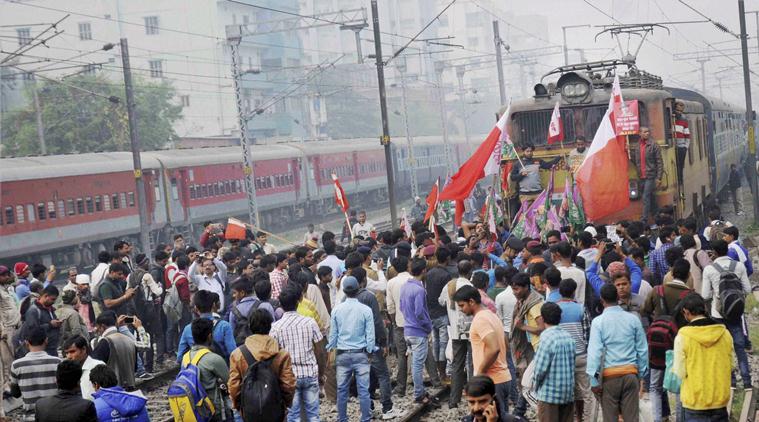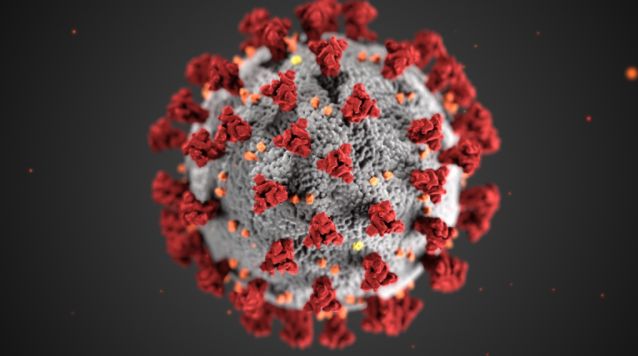A Market Gripped by FearThe Indian Prime Minister announced on 8th November 2016 that Rs 500 and Rs 1,000 banknotes would no longer be legal tender. Linked are Part-I, Part-II and Part-III updates on the rapidly encroaching police state. The economic and social mess that Modi has created is unprecedented. It will go down in history as an epitome of naivety and arrogance due to Modi’s self-centered desire to increase tax-collection at any cost. Fear has gripped the bullion market, for one is deemed to be guilty until proven otherwise. People with perfectly legal cash are afraid of cameras recording their purchases and having to pay outrageous bribes. After an adjustment period people will buy more — not less — gold. For now, the gold market has gone mostly underground with the gold price hovering around US$1,700 per ounce. Did Modi want to boost the informal economy? |
|
The Cultural and Political UndercurrentThe individual has been reduced to a cog in a big machine that exists in Modi’s imagination. The country is expected to rally behind him, for his glory. The IMF is going along with Modi, for in their simplistic view, enforcing western-style institutions on India will lead to the replication of western economic development and the rule of law in India. Not that increasingly totalitarian and centralized governing institutions work even in the West, but in the alien culture— irrational and tribal — of India, they rapidly mutate and become very corrupt. That is, unless such institutions are run by Europeans. But the days when Britain ruled India are over. In the irrational and extremely tribal society of India, where calculation and planning are much more difficult, institutions must be much more decentralized than in the West if they are to function properly. At the moment Modi is doing the exact opposite: rapidly increasing his centralized control. Modi and the other fake-elites are not the only people responsible for the mess. The real poison comes from society itself. India’s salaried middle class has been given western education. But the concept of critical thinking and reasoning never really got any traction in India’s society. The situation has steadily worsened since the British left 69 years ago. Similar to other Indian institutions, the education system has continued to deteriorate. Members of the middle class, while retaining their superstitions, did learn the superficial mechanics, but devoid of any deeper meaning. In their simplistic, mechanical thinking (for complex thinking never evolves until one has critical thinking), they came to believe that superficially copying western institutions should be the way forward for India. Moreover, the salaried middle class that supports to Modi, is currently unaffected by the currency ban and hence can claim the moral high ground. It is the hungry, wretched and starving people, the small businesses, the real backbone of the economy, that are worst affected. Politicians within Modi’s party and in the opposition have struggled to oppose Modi effectively, for they are all corrupt. Given the irrationality of Indian society, people tend to communicate in slogans and sound-bites, not through argumentation. The slogan they have been given by Modi is: If you oppose demonetization, you are hiding unaccounted for, corrupt money. What most in the self-centered salaried middle class forgot to consider is that their paper-shuffling jobs will soon be at enormous risk, as the cascading effect of the harm done to small businesses will eventually destroy their own jobs. Within three weeks, people are getting laid off across the country. The middle class will also suffer from the inevitable increase in crime that the hunger and desperation of poor people is likely to bring about. |
|
| Indian institutions had to mutate to cater to the underlying culture. Institutions of India as left by the British are now rapidly degrading, with Modi acting as the catalyst. India will become more totalitarian as the last vestiges of democracy and the associated liberties are destroyed.
It is hard to believe that India can continue to exist as a single unit for long. The problem is that nothing in India is structured to allow for a peaceful breakup. Secession is not recognized in the constitution or in the law, ensuring that any breakup will be accompanied by massive violence and pain, perhaps worse than what happened in 1945, when India and Pakistan split up. Money MonopolyIt would have been almost impossible for me to believe that a single person would be able to bring a large, complex, and extremely diverse society like India to a sudden standstill. One could change the government, change some important laws, or even impose dictatorship, but it is almost impossible to quickly and significantly change the direction of the Titanic. Despite my pessimism about India, I had not considered that there could have been a single key issue that would fundamentally change society, stall the economy, and throw society into utter confusion, desperation and depression – but Modi found a way. Banning 88% of the monetary value of the currency in circulation, which catered to 97% of consumer transactions, meant that the economy went into a traumatic shock, throwing financial commitments and contracts out of gear. Now a vicious cycle is underway. Fiat currency is fully under the government’s control. This paper-based currency system is extremely corrupt, as it has no inherent value of its own. All its perceived value is derived from regulatory edicts and citizens have to look to the government for directions. Control over the printing press gives the government autocratic control over inflation, deflation, and credit. I realize now that monopolistic control over the currency is an even worse problem than I thought. As a result of Modi’s decrees, the concept of money has died for a large section of society. |
|
Social EngineeringA simple instruction led to a ban on 88% of the monetary value of the currency. Even if this had been well-planned, the decision was so drastic that it would have required massive and continuous tinkering. It was horribly planned though, requiring a series of patch-up jobs. The government has continued to release new instructions on how much banks could convert, to whom and on what basis, what would be taxed, and what would be deemed to be illegal cash. No one really knows what the latest rules are and even the banks are confused. One wonders if Modi himself still knows what he wants. The government had no way to replace the old banknotes by new ones. Merely printing the notes would have required at least six months. Distributing these to villages, which can be tens of kilometers from the nearest bank, would have taken a lot longer. In the meantime whatever good money is still available — the 12% of the still-legal tender — is rapidly going out of circulation, disappearing below the mattresses of the relatively rich. ATMs and banks are constantly running out of cash to dispense. With every passing day, the queues have grown longer and longer. Old people, the disabled and women (unless they were prepared to endure sexual harassment) had no way to convert their currency. They were hoping for the queues to shorten and become more orderly. This is no longer going to happen. By November 24, the government realized that even this chaotic conversion could not be sustained. It gave notice that the conversion of old banknotes was to be abruptly discontinued. With the end of conversion those who have no bank accounts — 50% of the India’s population — are now left in a situation in which their banned currency has indeed become toilet-paper. In a country in which the vast majority of people survive on a dollar or two or often much less per day, whatever they had has been stolen by the government, taxed away indirectly. Could there be a worse tax than this? Theoretically, they can still walk into a branch of the Reserve Bank of India, which only has a handful of branch offices around the country, in order to convert Rs 500 bills. Rs 1,000 bills will no longer be converted at all. Modi now expects these poor people to travel hundreds of kilometers and spend a fortune to change Rs 2,000 or so ($30) at the most. Apparently, Modi cannot even do primary school math. Those who think Modi is in favor of the free-market should pay attention to what the concept actually means to him and his followers. To them, the free-market means the ability of the government to confiscate the property of poor people — for example, their land for infrastructure — for the so-called “greater good”, to be handed over to corporations or the State. This is the irony of India. The communist revolutions of China and Russia were at least partly about getting rid of the entrenched middle class, a.k.a the “bourgeoisie”. The Modi-led revolution in India is about the salaried middle class trying to get rid of poor people — India’s deeply entrenched caste system does not allow for poor people to be seen as human beings. There will eventually be blowback from the poor people and it will not be pleasant for the members of the salaried middle class. But irrational as they are, they cannot yet foresee what is likely to come next. The government has also given notice that it will tax all the cash deposited that it thinks is somehow suspicious at a minimum rate of 50% and will require the remaining 50% to be frozen for four years. Interest rates are now falling, helping out debtors and the well-connected, to the detriment of savers, while destroying the future economy by interfering with the efficient allocation of capital. |
|
Demonetization has not Achieved any of the Claimed BenefitsModi claimed that this demonetization would flush out fake currency bills. Not many have turned up, certainly not in any unusual quantities. Perhaps Pakistan is now vindicated, as it had been accused of printing most of the fakes. Despite the fact that the new bills have been in circulation for less than three weeks, fakes of the new banknotes have already begun are circuating – to such an extent that many people are refusing to accept the new bills. The new bills — even when they are not fake — are badly printed with many errors. The new bills of Rs 2,000, with a face-value twice as large as the largest of the old banknotes, are proving very efficient for giving and taking bribes. |
|
| Finally, with a large part of the country’s cash now removed from circulation and having moved into the banking system, the cash reserve ratio has been increased, as excess liquidity in the banking system has flooded into the bond market. This has driven bond yields lower against the RBI’s wishes, which is moreover in danger of running short of collateral for its repo operations.
|
 Protests have started in isolated pockets. I am tempted to side with them, but I am fully aware that any counter-revolution or organized protest virtually always involves a heavy-handed approach. The opposition will be no different from Modi’s brigade, and the next sociopath to come after Modi will probably be even worse than he is. Photo credit: PTI - Click to enlarge |
| As a next step, the government will issue “market stabilization bonds” to soak up excess liquidity in the banking system. Thus private capital has been crowded out, moving into the hands of Modi’s government. |
Protest against demonetization |
Conclusion, for Those Living in IndiaOnce social engineering of this size has started, people will and should take steps to protect themselves and their families. Decisions should be made today, not tomorrow. People’s money in banks is frozen and can no longer be used for purposes involving cash. Every indication is that this money will stay frozen, as Modi wants coerce people into invest their money according to his preferences: into low-interest bonds or negative-yielding infrastructure projects. Any rational person should be to trying to avoid getting stuck in what is a rapidly emerging police state that will control people’s finances and eventually their entire lives. It will probably be best to take as much investment-related money as one can out of the system, or even better out of India. A few escape routes still exist for the time being. By law it is still possible to move out US$250,000 per year outside India. This window cannot stay open too long. Until it is shut, one still has the option to move money into foreign currency or investments in more productive instruments outside of India. One should also be able to store gold with an offshore entity in a country that respects private property. Many rich Indians already do the above, all legally. They own swaths of properties in HK, Singapore, and Thailand, and increasingly also in Canada and New Jersey (USA). Many directors of Indian public companies are officially resident in Singapore, to avoid becoming a puppet of the extra-ordinarily corrupt and rapacious Indian government, which has been made much worse by Modi. With India’s institutions now rapidly degrading and the salaried middle class having been zombified, risks are extremely high. Explore your options before the encroaching police state closes the remaining avenues of escape. Of course, being totally incompetent, India’s government cannot enforce a full-blown police state, but that will not stop massive damage to the economy and what will bring about chronic and frequently acute anxiety among Indians. India will fundamentally change going forward, in a very negative way. It may eventually disintegrate, a possibility for which one should be prepared. |
As the month of November 2016 comes to a close, members of the lower classes who must convert their soon-to-be-paid salaries to cash will face even greater desperation. |
Edited by PT
Full story here Are you the author? Previous post See more for Next post
Tags: Narendra Modi,newslettersent,On Economy,On Politics












































